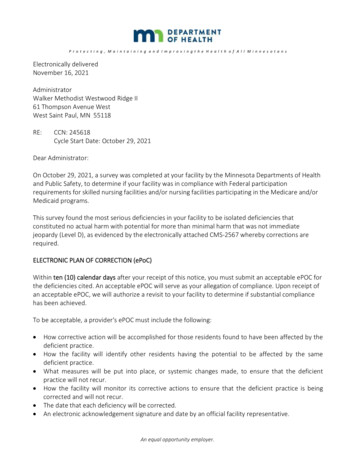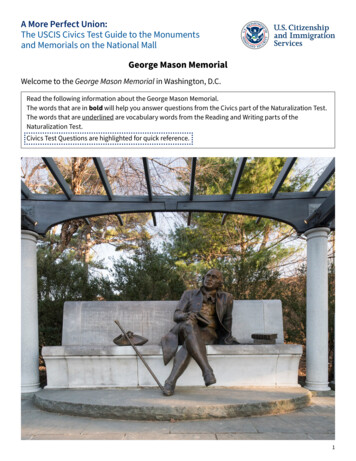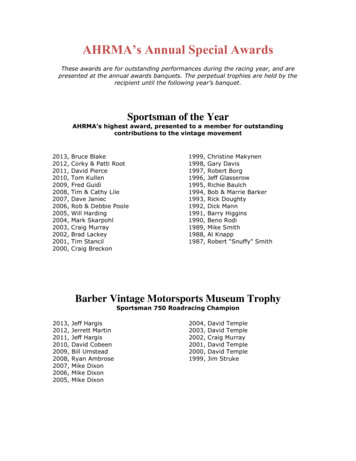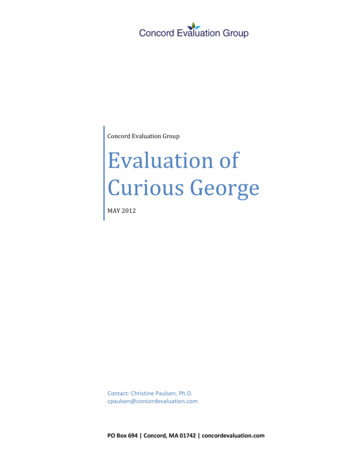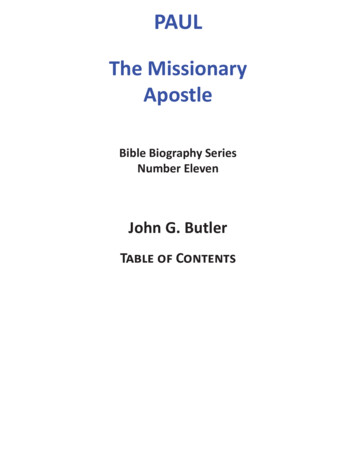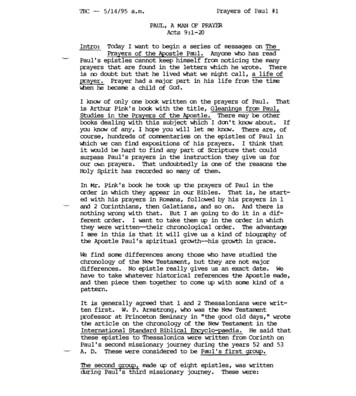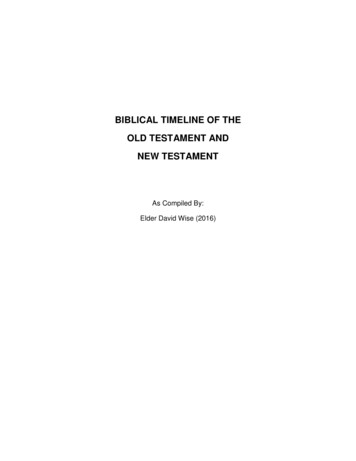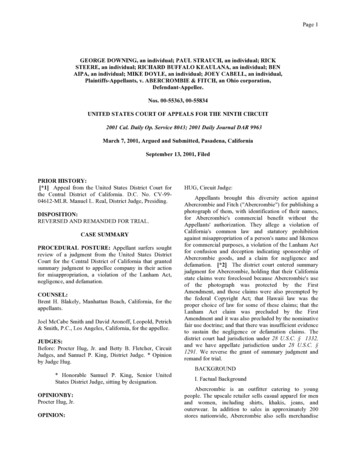
Transcription
Page 1GEORGE DOWNING, an individual; PAUL STRAUCH, an individual; RICKSTEERE, an individual; RICHARD BUFFALO KEAULANA, an individual; BENAIPA, an individual; MIKE DOYLE, an individual; JOEY CABELL, an individual,Plaintiffs-Appellants, v. ABERCROMBIE & FITCH, an Ohio corporation,Defendant-Appellee.Nos. 00-55363, 00-55834UNITED STATES COURT OF APPEALS FOR THE NINTH CIRCUIT2001 Cal. Daily Op. Service 8043; 2001 Daily Journal DAR 9963March 7, 2001, Argued and Submitted, Pasadena, CaliforniaSeptember 13, 2001, FiledPRIOR HISTORY:[*1] Appeal from the United States District Court forthe Central District of California. D.C. No. CV-9904612-MLR. Manuel L. Real, District Judge, Presiding.DISPOSITION:REVERSED AND REMANDED FOR TRIAL.CASE SUMMARYPROCEDURAL POSTURE: Appellant surfers soughtreview of a judgment from the United States DistrictCourt for the Central District of California that grantedsummary judgment to appellee company in their actionfor misappropriation, a violation of the Lanham Act,negligence, and defamation.COUNSEL:Brent H. Blakely, Manhattan Beach, California, for theappellants.Joel McCabe Smith and David Aronoff, Leopold, Petrich& Smith, P.C., Los Angeles, California, for the appellee.JUDGES:Before: Procter Hug, Jr. and Betty B. Fletcher, CircuitJudges, and Samuel P. King, District Judge. * Opinionby Judge Hug.HUG, Circuit Judge:Appellants brought this diversity action againstAbercrombie and Fitch ("Abercrombie") for publishing aphotograph of them, with identification of their names,for Abercrombie's commercial benefit without theAppellants' authorization. They allege a violation ofCalifornia's common law and statutory prohibitionagainst misappropriation of a person's name and likenessfor commercial purposes, a violation of the Lanham Actfor confusion and deception indicating sponsorship ofAbercrombie goods, and a claim for negligence anddefamation. [*2] The district court entered summaryjudgment for Abercrombie, holding that their Californiastate claims were foreclosed because Abercrombie's useof the photograph was protected by the FirstAmendment, and those claims were also preempted bythe federal Copyright Act; that Hawaii law was theproper choice of law for some of these claims; that theLanham Act claim was precluded by the FirstAmendment and it was also precluded by the nominativefair use doctrine; and that there was insufficient evidenceto sustain the negligence or defamation claims. Thedistrict court had jurisdiction under 28 U.S.C. § 1332,and we have appellate jurisdiction under 28 U.S.C. §1291. We reverse the grant of summary judgment andremand for trial.BACKGROUND* Honorable Samuel P. King, Senior UnitedStates District Judge, sitting by designation.OPINIONBY:Procter Hug, Jr.OPINION:I. Factual BackgroundAbercrombie is an outfitter catering to youngpeople. The upscale retailer sells casual apparel for menand women, including shirts, khakis, jeans, andouterwear. In addition to sales in approximately 200stores nationwide, Abercrombie also sells merchandise
Page 2through its subscription catalog, the "Abercrombie andFitch Quarterly" ("Quarterly").The Quarterly is Abercrombie's largest [*3]advertising vehicle. It accounts for approximately 80%of Abercrombie's overall advertising budget. Theprimary purpose of the Quarterly is to build brandawareness and increase sales. Each issue is over 250pages in length and embraces a theme such as collegiatelifestyle, back to school, or winter wear. The Quarterlycontains photographs of models wearing Abercrombie'sgarments as well as pictures of the clothing displayed forsale. In addition, approximately one-quarter of each issueis devoted to stories, news and other editorial pieces.In 1998, Michael Jeffries, Abercrombie's CEO,developed a surfing theme for the upcoming Quarterly.Abercrombie held the photo shoot for the upcomingissue at San Onofre Beach, California. While at the photoshoot, Abercrombie employees Sam Shahid and SavasAbadsidis looked through a compilation of surfingphotographs by surf photographer LeRoy Grannis. Thephoto book contained a picture of Appellants whichGrannis had taken at the 1965 Makaha International SurfChampionship in Hawaii. Sam Shahid purchased thephotograph, along with three other photographs from thebook, for 100 each. LeRoy Grannis then handwrote thenames of Appellants at the [*4]bottom of thephotograph.Subsequently, Sam Shahid showed Appellants'photograph to Jeffries who decided to use the photographin the upcoming Quarterly. Abercrombie did not obtainAppellants' permission. Jeffries also decided to create tshirts, exactly like those worn by the Appellants in thephotograph, for sale in the upcoming issue. Abercrombielabeled the t-shirts" Final Heat Tees." The t-shirts wereadvertised for sale in the Quarterly.The Spring 1999 Quarterly, "Spring Fever," containsa section entitled "Surf Nekkid." The "Surf Nekkid"section includes an article recounting the history ofsurfing. Abercrombie also included a 700-word story,entitled" Your Beach Should Be This Cool," describingthe history of Old Man's Beach at San Onofre,California. The following page exhibits the photographof Appellants. The two pages immediately thereafterfeature the "Final Heat Tees."The "Spring Fever" issue contains other articlesabout the surfing lifestyle. An article entitled"Beachcombing" documents the efforts of the SurfriderFoundation, an ecological group founded by surfers. Stillanother article entitled "Where the Wild Things Are,"written by the editor of Surfer Magazine, [*5] describesvarious surfer "types." Also contained in the issue is aninterview of Nat Young, former world surfing championand the first professional surfer. The interview isaccompanied by photographs of Young and his sonwearing Abercrombie clothing.II. Procedural HistoryOn April 28, 1999, Appellants George Downing,Paul Strauch, Rick Steere, Richard Buffalo Keaulana,and Ben Aipa filed a complaint in the United StatesDistrict Court for the Central District of California.Appellants later amended the complaint to add JoeyCabell and Mike Doyle. Appellants alleged thatAbercrombie misappropriated their names and likenessesin violation of California's statutory and common lawprotections against commercial misappropriation, thatthe publication of the photograph in the catalog violatedthe Lanham Act and they alleged claims for negligenceand defamation. Subsequently, Appellants andAbercrombie both filed motions for summary judgment.The district court entered summary judgment forAbercrombie. Appellants timely appealed. Abercrombiethen filed a motion for attorneys' fees and otherexpenses. The district court granted the motion, awardingAbercrombie approximately one-fourth [*6] of theattorneys' fees that it sought. Appellants timely filed anotice of appeal from that order. We consolidated thetwo appeals.On appeal, Appellants contend: (1) Abercrombie'suse of the photograph is not protected under the FirstAmendment; (2) the state law publicity claims are notpreempted by the Copyright Act; (3) California law is theproper choice of law for the claim under California CivilCode § 3344; (4) triable issues of fact exist with regardto the Lanham Act claims; (5) triable issues of fact existwith regard to the defamation claim; (6) the district courterred in denying the motion for a continuance; (7) thedistrict court erred in awarding attorneys' fees and coststo Abercrombie. n1n1 The Appellants do not appeal thesummary judgment on their negligence claim.STANDARD OF REVIEWThe district court's grant of summary judgment isreviewed de novo. Botosan v. Paul McNally Realty, 216F.3d 827, 830 (9th Cir. 2000). We must determine,viewing the evidence in the light [*7] most favorable tothe nonmoving party, whether there are any genuineissues of material fact and whether the district courtcorrectly applied the relevant substantive law. Lopez v.Smith, 203 F.3d 1122, 1131 (9th Cir. 2000) (en banc).ANALYSIS
Page 3I. First Amendment and Right of Publicity ClaimsThe district court concluded that Abercrombie's useof the photograph containing Appellants' names andlikenesses was proper because it constituted expressionprotected under the First Amendment. We disagree.California has long recognized a common law rightof privacy for protection of a person's name and likenessagainst appropriation by others for their advantage. SeeEastwood v. Superior Court, 149 Cal. App. 3d 409, 416,198 Cal. Rptr. 342 (Ct. App. 1983). To sustain a commonlaw cause of action for commercial misappropriation, aplaintiff must prove: "(1) the defendant's use of theplaintiff's identity; (2) the appropriation of plaintiff'sname or likeness to defendant's advantage, commerciallyor otherwise; (3) lack of consent; and (4) resultinginjury." Id. at 417.In addition to the common law cause of action,California has provided [*8] a statutory remedy forcommercial misappropriation under California CivilCode §3344. The remedies provided for underCalifornia Civil Code § 3344 complement the commonlaw cause of action; they do not replace or codify thecommon law. See Newcombe v. Adolf Coors Co., 157F.3d 686, 691-92 (9th Cir. 1998). Section 3344 providesin relevant part, "any person who knowingly usesanother's name, voice, signature, photograph, or likeness,in any manner . for purposes of advertising . withoutsuch person's prior consent . shall be liable for anydamages sustained by the person." Cal. Civ. Code §3344(a). Under section 3344, a plaintiff must prove allthe elements of the common law cause of action. Inaddition, the plaintiff must allege a knowing use by thedefendant as well as a direct connection between thealleged use and the commercial purpose. See Eastwood,149 Cal. App. 3d at 417.Under both the common law cause of action and thestatutory cause of action "no cause of action will lie forthe publication of matters in the public interest, whichrests on the right of the public to know and the freedomof the press to tell it." Montana v. San Jose MercuryNews, Inc., 34 Cal. App. 4th 790, 793 (Ct. App. 1995).[*9] This First Amendment defense extends "to almostall reporting of recent events," as well as to publicationsabout "people who, by their accomplishments, mode ofliving, professional standing or calling, create alegitimate and widespread attention to their activities. "Eastwood, 149 Cal. App. 3d at 422. However, thedefense is not absolute; we must find "a properaccommodation between [the] competing concerns" offreedom of speech and the right of publicity. Id.In the instant case, Abercrombie defends on thebasis of the First Amendment arguing that thephotograph illustrates an article about surfing, a matter inthe public interest. To support its defense, Abercrombierelies on Dora v. Frontline Video, Inc., 15 Cal. App. 4th536 (Ct. App. 1993). In Dora, the court held that asurfing documentary was in the public interest because itwas "about a certain time and place in California historyand, indeed, in American legend." Id. at 543. Dorainvolved a surfing legend, Mickey Dora, who sued theproducer of a video documentary on surfing claimingcommon law and statutory appropriation of his name andlikeness. See id. at 540. [*10] The trial court enteredsummary judgment for the film's producer and theCalifornia Court of Appeal affirmed. See id. Inaddressing the First Amendment issue, the court foundthat the documentary was about a matter of publicinterest, specifically surfing, and, therefore, the producerwas protected by the defense. See id. at 544. In soconcluding the court stated:surfing is of more than passing interest to some. It hascreated a life-style that influences speech, behavior,dress, and entertainment, among other things. Aphenomenon of such scope has an economic impact,because it affects purchases, travel, and the housingmarket. Surfing has also had a significant influence onthe popular culture, and in that way touches manypeople. It would be difficult to conclude that a surfingdocumentary does not fall within the category of publicaffairs.Id. at 546.Although the theme of Abercrombie's catalog wassurfing and surf culture, a matter of public interest, theuse of Appellants' names and pictures is quite differentfrom that involved in the Dora case. In Dora, MickeyDora's contribution to the development of the surf [*11]life-style and his influence on the sport was "the point ofthe program." Id. at 543. Dora was depicted in thedocumentary because his identity directly contributed tothe story about surfing which came within the protectedpublic interest.In the current action, there is a tenuous relationshipbetween Appellants' photograph and the themepresented. Abercrombie used Appellants' photographessentially as window-dressing to advance the catalog'ssurf-theme. The catalog did not explain that Appellantswere legends of the sport and did not in any way connectAppellants with the story preceding it. In fact, the catalogincorrectly identifies where and when the photographwas taken. We conclude that the illustrative use ofAppellants' photograph does not contribute significantlyto a matter of the public interest and that Abercrombiecannot avail itself of the First Amendment defense. n2Accordingly, we reverse the district court's grant ofsummary judgment in favor of Abercrombie.
Page 4n2 This case is also distinguishable fromHoffman v. L.A. Magazine, 255 F.3d 1180, slipop. at 8591 (9th Cir. 2001), in which thedefendant magazine successfully asserted a FirstAmendment defense to Dustin Hoffman's claimof misappropriation. In that case, L.A. Magazineused a digitally-altered picture of Hoffman, as"Tootsie," in a current designer dress to illustrateits "Grand Illusions "article. We concluded thatsuch use was noncommercial speech entitled tofull First Amendment protection. Id. at 8600. Incontrast to the present case, where Abercrombie,itself, used Appellants' images in its catalog topromote its clothing, L.A. Magazine wasunconnected to and received no considerationfrom the designer for the gown depicted in thearticle. Id. at 8599. Further, while L.A. Magazinemerely referenced a shopping guide buried in theback of the magazine that provided stores andprices for the gown, id., Abercrombie placed theAppellants' photograph on the page immediatelypreceding the "Final Heat Tees" for sale. Basedon these factors, we conclude that Abercrombie'suse was much more commercial in nature and,therefore, not entitled to the full FirstAmendment protection accorded to L.A.Magazine's use of Hoffman's image. Id. at 8601.[*12]II. Federal Copyright PreemptionAbercrombie contends that its right to reproduce andpublish the photograph of the Appellants is governed bythe federal Copyright Act, 17 U.S.C. § § 101-1101, andthat Appellants' state law claims are preempted byfederal copyright law."When acting within constitutional limits, Congressis empowered to pre-empt state law by so stating inexpress terms." California Fed. Sav. & Loan Ass'n v.Guerra, 479 U.S. 272, 280, 93 L. Ed. 2d 613, 107 S. Ct.683 (1987). Under 17 U.S.C. § 301, States are expresslyprohibited from legislating in the area of copyright law.n3 In order for preemption to occur under the federalCopyright Act, two conditions must be satisfied. First,the content of the protected right must fall within thesubject matter of copyright as described in 17 U.S.C. § §102 and 103. Second,the right asserted under state law must be equivalentto the exclusive rights contained in section 106 of theCopyright Act. See Del Madera Properties v. Rhodes &Gardner, Inc., 820 F.2d 973, 976 (9th Cir. 1987)(overruled on other grounds).n3 Section 301(a) of 17 U.S.C. preempts:all legal or equitable rights that are the equivalentto any of the exclusive rights within the generalscope of copyright as specified by sections 102and 103, whether created before or after that dateand whether published or unpublished, aregoverned exclusively by this title. Thereafter, noperson is entitled to any such right or equivalentright in any such work under the common law orstatutes of any State.[*13]The subject matter protected by the Copyright Act isset forth in 17 U.S.C. § 102, which provides in relevantpart as follows:Copyright protection subsists . in original works ofauthorship fixed in any tangible medium of expression,now known or later developed, from which they can beperceived, reproduced, or otherwise communicated,either directly or with the aid of a machine or device.Works of authorship include . pictorial, graphic, andsculptural works.Section 103 provides that the subject matter specified in§ 102 also includes compilations and derivative works,"but the copyright in a compilation or derivative workextends only to the material contributed by the author ofsuch works as distinguished from the preexistingmaterial employed in the work." Section 106 gives thecopyright holder exclusive rights to copy the copyrightedwork or derivatives and to distribute it to the public.The photograph itself, as a pictorial work ofauthorship, is subject matter protected by the CopyrightAct. See 17 U.S.C. § 101 (providing that "pictorial,graphic, and sculptural works include . photographs.")However, [*14] it is not the publication of thephotograph itself, as a creative work of authorship, that isthe basis for Appellants' claims, but rather, it is the use ofthe Appellants' likenesses and their names pictured in thepublished photograph. The Nimmer treatise on copyrightlaw states:The "work" that is the subject matter of the right ofpublicity is the persona, i.e., the name and likeness of acelebrity or other individual. A persona can hardly besaid to constitute a "writing" of an" author" within themeaning of the copyright clause of the Constitution. Afortiori it is not a" work of authorship" under the Act.
Page 5Such name or likeness does not become a work ofauthorship simply because it is embodied in acopyrightable work such as a photograph.1 Nimmer on Copyright § 1.01[B][1][c] at 1-23 (1999).The same point is made in McCarthy's Treatise on Rightof Publicity and Privacy:The "subject matter" of a Right of Publicity claim is nota particular picture or photograph of plaintiff. Rather,what is protected by the Right of Publicity is the veryidentity or persona of the plaintiff as a human being .While copyright in a given photograph may be owned[*15] by the person depicted in it, the exact image inthat photograph is not the underlying "right" asserted in aRight of Publicity case. To argue that the photograph isidentical with the person is to confuse illusion andillustration with reality. Thus, assertion of infringementof the Right of Publicity because of defendant'sunpermitted commercial use of a picture of plaintiff isnot assertion of infringement of copyrightable "subjectmatter "in one photograph of plaintiff.section 3344 claims against the unauthorized publisher oftheir photographs are not the equivalent of a copyrightinfringement claim and are not preempted by federalcopyright law. [*17] " Id. at 365.We agree with the approach taken by the FifthCircuit and the reasoning employed in KNB Enterprises.The subject matter of Appellants' statutory and commonlaw right of publicity claims is their names andlikenesses. See Newcombe, 157 F.3d at 691. A person'sname or likeness is not a work of authorship within themeaning of 17 U.S.C. § 102. This is true notwithstanding the fact that Appellants' names andlikenesses are embodied in a copyrightable photograph.The same concept is specifically embodied in 17 U.S.C.§ 103, which provides that the copyright in derivativeworks extends only to the material contributed by theauthor as distinguished from preexisting materialemployed in the work. n4n4 Abercrombie relies on the California caseof Fleet v. CBS, 50 Cal. App. 4th 1911 (Ct. App.1996). This case was distinguished by both theFifth Circuit in Brown, 201 F.3d at 658, and theCalifornia Court of Appeals in KNB Enterprises,78 Cal. App. 4th at 370-71. In Fleet, the plaintiffswere actors in a copyrighted film. The claims ofthe plaintiffs were based on their dramaticperformance in a film CBS sought to distribute.The court stated:McCarthy, Rights of Publicity and Privacy § 11.13[C] at11-72-73 (1997).A recent case in the Fifth Circuit held that the Texastort of misappropriation, which provides protection fromthe unauthorized appropriation of one's name, image, orlikeness was not preempted by the Copyright Act. SeeBrown v. Ames, 201 F.3d 654, 661 (5th Cir. 2000). Thecase involved a record company's misappropriation ofthe names and likenesses of individual musicians, songwriters, and music producers on the company's CD's,tapes, catalogs, and posters. See id. at 656-57. The courtstated that "the tort of misappropriation of a name orlikeness protects a person's persona .A persona [*16]does not fall within the subject matter of copyright." Id.at 658. Thus, the court held that § 301 preemption doesnot apply.A similar result was reached in a case decided by aCalifornia Court of Appeal, KNB Enterprises v.Matthews, 78 Cal. App. 4th 362 (Ct. App. 2000). TheCalifornia Court of Appeal held that the state law right ofpublicity claims were not pre-empted by the CopyrightAct. See id. at 374-75. The copyright owner of eroticphotographs, which had been displayed withoutauthorization and for profit on an Internet website,brought suit against the website's operator asserting amisappropriation claim under California Civil Code §3344. See id. at 365-66. The court applied the two-parttest for determining preemption and found that neithercondition had been met. See id. at 374. The court foundthat "because a human likeness is not copyrightable,even if captured in a copyrighted photograph, the models'We agree that as a general proposition Civil Codesection 3344 is intended to protect rights whichcannot be copyrighted and that claims madeunder its provisions are usually not preempted.But appellants' analysis crumbles in the face ofone obvious fact: their individual performances inthe film White Dragon were copyrightable. Sincetheir section 3344 claims seeks only to preventCBS from reproducing and distributing theirperformances in the film, their claims must bepreempted by federal copyright law.Fleet, 50 Cal. App. 4th at 1919. This is clearlydistinguishable from this case where theAppellants' claim is based on the use of theirnames and likenesses, which are notcopyrightable.[*18]The second requirement for copyright preemption asnoted above is that the right asserted under state lawmust be equivalent to the exclusive rights contained in §106 of the Copyright Act. This requirement also is not
Page 6met. Because the subject matter of the Appellants'statutory and common law right of publicity claims istheir names and likenesses, which are not copyrightable,the claims are not equivalent to the exclusive rightscontained in § 106.defendants residents of California. Mexican law placed alimitation on the amount that could be received in awrongful death action (24,334 pesos or 1,946.72)whereas California law provided no such limitation. See522 P.2d at 668. The California Supreme Court stated:III. Choice of LawWe review de novo a district court's decisionconcerning the appropriate choice of law. Abogados v.AT&T, Inc., 223 F.3d 932 (9th Cir. 2000). "In reviewingthe factual findings that underlie the choice of lawdetermination, this court must apply the clearlyerroneous standard." Contact Lumber Co. v. P.T. MogesShipping Co., Ltd., 918 F.2d 1446, 1450 (9th Cir. 1990).Applying choice of law principles, the district courtdismissed Appellants' statutory misappropriation claimas to the five Appellants who reside in Hawaii: GeorgeDowning, Rick Steere, Richard Keaulana, Ben Aipa, andJoey Cabell. We conclude that the district court erred indismissing these claims.In a diversity [*19] case, "federal courts apply thesubstantive law of the forum in which the court islocated, including the forum's choice of law rules."Insurance Co. of North Am. v. Federal Express Corp.,189 F.3d 914, 921 (9th Cir. 1999). This action wasbrought in a district court in California. Therefore, welook to the choice of law rules applied in that state.California applies a three-step" governmentalinterest" analysis to choice-of-law questions: (1) "thecourt examines the substantive laws of each jurisdictionto determine whether the laws differ as applied to therelevant transaction", (2) "if the laws do differ, the courtmust determine whether a true conflict' exists in that eachof the relevant jurisdictions has an interest in having itslaw applied", and (3)" if more than one jurisdiction has alegitimate interest . the court [must] identify and applythe law of the state whose interest would be moreimpaired if its law were not applied." Abogados, 223F.3d at 934; Liew v. Official Receiver & Liquidator, 685F.2d 1192, 1196 (9th Cir. 1982). Only if both states havea legitimate but conflicting interest in applying its ownlaw [*20] will the court be confronted with a "trueconflict" case. See Insurance Co. of North Am., 189 F.3dat 921.The California Supreme Court's decision in Hurtadov. Superior Court, 11 Cal. 3d 574, 522 P.2d 666, 114Cal. Rptr. 106 (Cal. 1974), is the primary case settingforth California's choice of law rules and analyzing theapproach to be taken in determining the interest of eachjurisdiction in enforcing its own law. In that case, awrongful death action had been brought in California,where the automobile accident causing the death hadoccurred. The plaintiffs were residents of Mexico and thegenerally speaking the forum will apply its own rule ofdecision unless a party litigant timely invokes the law ofa foreign state. In such event he must demonstrate thatthe latter rule of decision will further the interest of theforeign state and therefore that it is an appropriate onefor the forum to [*21] apply to the case before it. In thecase at bench, California as the forum should apply itsown measure of damages for wrongful death, unlessMexico has an interest in having its measure of damagesapplied.Id. at 670 (citations omitted). In assessing the interest ofCalifornia in applying its law the Court stated:It is manifest that one of the primary purposes of a statein creating a cause of action in the heirs for the wrongfuldeath of the decedent is to deter the kind of conductwithin its borders which wrongfully takes life. It is alsoabundantly clear that a cause of action for wrongfuldeath without any limitation as to the amount ofrecoverable damages strengthens the deterrent aspect ofthe civil sanction: the sting of unlimited recovery . moreeffectively penalize(s) the culpable defendant anddeter(s) it and others similarly situated from such futureconduct.Id. at 672 (internal quotations and citations omitted).The court went on to emphasize that the interest indeterrence of conduct extends to "all persons within itsborders." 11 Cal. 3d at 584.With regard to the interest Mexico had in applyingits law, the [*22] California Supreme Court stated that"the interest of a state in a tort rule limiting damages forwrongful death is to protect defendants from excessivefinancial burdens or exaggerated claims. [A] state byenacting a limitation on damages is seeking to protect itsresidents from the imposition of these excessive financialburdens." 522 P.2d at 670 (citations omitted). TheCalifornia Supreme Court then summarized its holding:To recapitulate, we hold that where as here in aCalifornia action both this state as the forum and aforeign state (or country) are potentially concerned in aquestion of choice of law with respect to an issue in tortand it appears that the foreign state (or country) has nointerest whatsoever in having its own law applied,California as the forum should apply California law.
Page 7Id. at 671.The California Supreme Court's ruling in theHurtado tort case is directly applicable to this case.Abercrombie distributed its Spring Quarterly inCalifornia, and any misappropriation of the names andlikenesses of the Appellants would have occurred there.As the court stated, one of the primary purposes ofcreating a cause of action in tort is to [*23] determisconduct within its borders by persons present withinits borders. By distributing its catalog within California,Abercrombie was operating within its borders.Hawaii, on the other hand, like Mexico in Hurtado,had no interest in limiting the extent of relief that itsresidents could obtain for a wrongful act against them inCalifornia. It is even more clear in this case becauseHawaii did not place any limitation on recovery; insteadit simply did not provide for the extent of reliefCalifornia does in this type of action. It is pure fancy tobelieve that Hawaii would wish to restrict its residentsfrom recovery that others could obtain in Californiasolely because it had not enacted a statute likeCalifornia's to complement its common law action forthe same offense. Hawaii had no interest in having itslaw applied to this action brought in California.The California Supreme Court has made it clear thatwhen California has an interest in enforcing its lawwithin its borders and a foreign state (in this caseHawaii) has no interest in having its law applied, then thelaw of California should be applied. In this case, there isno "true conflict" of Hawaii law with California [*24]law, and thus the district court erred when it appliedHawaii law to some claims. California law is applicableto all of Appellants' claims.Boats, 599 F.2d 341 (9th Cir. 1979), for the appropriatefactors to consider in determining whether there exists alikelihood of confusion. The factors enumerated in AMFare: [*25]1. strength of the plaintiff's mark;2. relatedness of the goods;3. similarity of the marks;4. evidence of actual confusion;5. marketing channels used;6. likely degree of purchaser care;7. defendant's intent in selecting the mark; and8. likelihood of expansion of the product lines.AMF, 599 F.2d at 348-49.In our celebrity cases using the AMF factors wehave adapted these factors
In the instant case, Abercrombie defends on the basis of the First Amendment arguing that the photograph illustrates an article about surfing, a matter in the public interest. To support its defense, Abercrombie relies on Dora v. Frontline Video, Inc., 15 Cal. App. 4th 536 (Ct. App. 1993). In Dora, the court held that a

